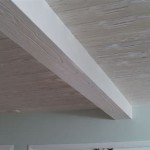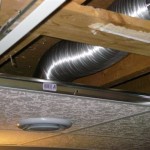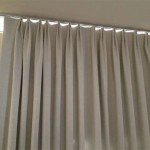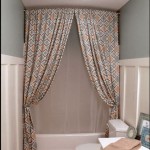What Are School Ceilings Made Of?
School ceilings are a crucial, often overlooked, component of the learning environment. They contribute significantly to the acoustics, lighting, and overall aesthetics of classrooms, hallways, and other educational spaces. The materials used in their construction are carefully chosen to meet specific requirements regarding safety, durability, cost-effectiveness, and compliance with building codes and regulations. Understanding the composition of these ceilings is essential for educators, facility managers, and anyone involved in school construction or renovation projects.
The selection of ceiling materials for schools involves considering a range of factors. Fire resistance is paramount, as schools must adhere to strict fire safety standards to protect students and staff. Acoustic performance is crucial for creating an environment conducive to learning, minimizing distractions, and improving speech intelligibility. Durability is important for withstanding the wear and tear of daily use in a high-traffic setting. Additionally, cost-effectiveness plays a significant role in material selection, as school budgets are often limited. Finally, aesthetics are taken into account to create a visually appealing and welcoming learning environment.
Acoustic Ceiling Tiles (ACT): The Dominant Choice
Acoustic Ceiling Tiles (ACTs) are the most commonly used material for school ceilings. These tiles are specifically designed to absorb sound, reducing reverberation and improving the overall acoustic quality of a space. The effectiveness of ACTs in controlling noise levels makes them ideal for classrooms, libraries, cafeterias, and gymnasiums, where noise reduction is essential for learning and communication.
ACTs are typically constructed from mineral fiber, fiberglass, or gypsum. Mineral fiber tiles are made from recycled materials, such as newsprint and slag wool, making them a sustainable option. Fiberglass tiles offer excellent sound absorption properties and are resistant to moisture and mold growth. Gypsum tiles, also known as plasterboard tiles, provide a smooth, paintable surface and are often used in areas where aesthetics are a primary concern. The composition of these tiles often includes binders, such as starch or clay, to hold the materials together and give the tiles their structural integrity.
The installation of ACTs is typically carried out using a suspended grid system. This system consists of metal channels suspended from the structural ceiling, creating a framework upon which the tiles are placed. The suspended grid system allows for easy access to utilities, such as electrical wiring and HVAC ducts, located above the ceiling. Furthermore, it facilitates the replacement of damaged or worn tiles without requiring extensive demolition work. The grid system itself is usually made of aluminum or steel, chosen for their durability and resistance to corrosion.
The acoustic performance of ACTs is measured by their Noise Reduction Coefficient (NRC). The NRC indicates the percentage of sound absorbed by the tile, with higher NRC values representing better sound absorption. Schools typically specify ACTs with an NRC of 0.70 or higher for classrooms and other areas where noise control is critical. In addition to NRC, the Ceiling Attenuation Class (CAC) is another important acoustic metric for ceiling tiles. CAC measures the ability of the ceiling to block sound transmission between adjacent spaces. A higher CAC indicates better sound attenuation, preventing noise from traveling through the ceiling into neighboring rooms. This is particularly important in schools to minimize distractions between classrooms.
Beyond their acoustic properties, ACTs also offer other benefits. They are often fire-rated to provide additional fire protection, helping to contain the spread of flames and providing valuable time for evacuation. Many ACTs are also resistant to mold and mildew growth, contributing to a healthier indoor environment. Moreover, ACTs are available in a variety of colors, textures, and patterns, allowing for customization to match the school's aesthetic preferences.
Gypsum Board: A Versatile and Cost-Effective Option
Gypsum board, also known as drywall or plasterboard, is another common material used in school ceilings, particularly in hallways, offices, and areas where a smooth, finished surface is desired. Gypsum board consists of a gypsum core sandwiched between two layers of paper. The gypsum core is naturally fire-resistant, making it a safe and reliable choice for school buildings. The paper facing provides a smooth surface that can be easily painted or textured to achieve the desired aesthetic.
Gypsum board is typically installed by attaching it to ceiling joists or furring strips. The joints between the boards are then taped and covered with joint compound to create a seamless surface. Once the joint compound is dry, it is sanded smooth and the entire ceiling is primed and painted. This process creates a durable and aesthetically pleasing ceiling that can withstand the wear and tear of daily use.
While gypsum board does not offer the same level of acoustic performance as ACTs, it can be used in conjunction with other sound-absorbing materials to improve the overall acoustics of a space. For example, sound-dampening insulation can be installed above the gypsum board ceiling to reduce sound transmission. Additionally, perforated gypsum board, which features small holes that allow sound to pass through and be absorbed by the insulation above, can be used to enhance acoustic performance.
Gypsum board is a cost-effective material that is readily available and easy to install. Its versatility and durability make it a popular choice for a wide range of applications in school buildings. Furthermore, gypsum board is recyclable, making it a sustainable building material. Recycled gypsum board can be used to manufacture new gypsum board products, reducing waste and conserving natural resources.
Different types of gypsum board are available for specific applications. Moisture-resistant gypsum board is designed for use in areas with high humidity, such as bathrooms and locker rooms. Fire-resistant gypsum board, also known as Type X gypsum board, has a thicker core and provides enhanced fire protection. Impact-resistant gypsum board is designed to withstand impacts from objects and is often used in hallways and gymnasiums.
Specialty Ceiling Materials: Addressing Specific Needs
In addition to ACTs and gypsum board, a variety of specialty ceiling materials are used in schools to address specific needs. These materials may offer enhanced acoustic performance, improved fire resistance, or unique aesthetic qualities.
Metal ceilings are often used in areas where durability and hygiene are paramount, such as kitchens and laboratories. Metal ceilings are resistant to moisture, mold, and bacteria growth, making them easy to clean and maintain. They are also fire-resistant and can withstand impacts from objects. Metal ceilings are available in a variety of finishes, including painted, powder-coated, and stainless steel.
Wood ceilings can add warmth and visual interest to a space. Wood ceilings are often used in libraries, auditoriums, and other areas where aesthetics are a primary concern. However, wood is a combustible material, so it is important to select wood ceiling products that have been treated with fire retardants to meet fire safety standards. Wood ceilings are available in a variety of species, finishes, and patterns.
Fabric-wrapped panels are another option for improving the acoustics of a space. These panels consist of a sound-absorbing core wrapped in fabric. Fabric-wrapped panels can be mounted directly to the ceiling or suspended from a grid system. They are available in a wide range of colors, textures, and patterns, allowing for customization to match the school's aesthetic preferences. Fabric-wrapped panels are often used in auditoriums, music rooms, and other areas where acoustic performance is critical.
Linear metal ceilings are composed of long, narrow metal panels that create a sleek, modern look. These ceilings are often used in hallways, lobbies, and other areas where aesthetics are important. Linear metal ceilings offer good acoustic performance and are easy to clean and maintain. They are available in a variety of colors and finishes.
Stretch ceilings are made of a lightweight fabric membrane that is stretched and clipped to a perimeter track. Stretch ceilings provide a smooth, seamless surface and can be used to create unique shapes and designs. They are available in a variety of colors and finishes and can be printed with custom images or graphics. Stretch ceilings are often used in cafeterias, auditoriums, and other areas where aesthetics are a primary concern. They also offer good acoustic performance and are easy to clean and maintain.
Open-cell ceilings consist of a grid of open cells that allow sound to pass through and be absorbed by the insulation above. Open-cell ceilings provide excellent acoustic performance and are often used in classrooms, libraries, and other areas where noise control is critical. They also allow for easy access to utilities located above the ceiling. Open-cell ceilings are available in a variety of materials, including aluminum, steel, and wood.
The choice of ceiling material for a school depends on a variety of factors, including budget, acoustic requirements, fire safety standards, and aesthetic preferences. By carefully considering these factors, schools can select the ceiling materials that best meet their needs and create a safe, comfortable, and conducive learning environment.
School Ceiling Tiles Acoustical Ceilings For Schools Kanopi By Armstrong
School Ceiling Tiles Acoustical Ceilings For Schools Kanopi By Armstrong

How The Right Acoustic Ceiling Can Improve A School S Performance Spaces4learning

Ceiling Tiles For Schools
School Ceiling Tiles Panels At Rockfon Company

Ceilings For Education Armstrong Ceiling Solutions Commercial
School Ceiling Tiles Acoustical Ceilings For Schools Kanopi By Armstrong

Asbestos In Schools A Guide For Pas Faculty

School Zone Fine Fissured Armstrong Ceiling Solutions Commercial
School Ceiling Tiles Acoustical Ceilings For Schools Kanopi By Armstrong
Related Posts








